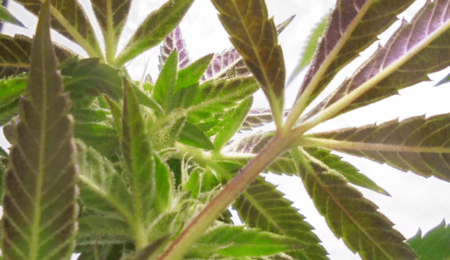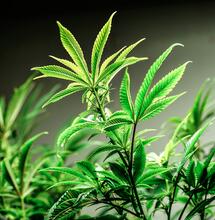Understanding Sativa Cannabis
13 Jan 2019

By Stoney Tark
Growing Cannabis requires a good understanding of the genetic spectrum that covers indica, sativa and hybrid varieties. As all strains originated as outdoor landraces, sativa genetics differ very much so from indica Cannabis, so below is better explained about sativa varieties.
 Flowers when growing will be taller than indica flowers and there will be a noticeable difference in calyx development. Not that indica flower is superior to sativa flower, however in terms of bag appeal and weight per gram, a haze nug will be larger in size.
Sativa varieties can grow vigorously and when flowered, will often stretch upto 250% of its original size. Growing with these strains indoors can be challenging especially if you have not have much experience with long flowering, sativa lines. The characteristics of the leaves will be long, serrated with wide spacing between each finger. Literally the opposite of how a thick fingered, short, indica variety produces.
Due to their natural climate, sativa varieties will not perform as well as indica or hybrid strains in places such as Northern Europe. Regarding short summers, cold and wet weather, unfortunately long flowering sativas cannot cope so well as they struggle to finish off their bloom. Plant resistance may be much lower at dealing with threats from insects and pathogens, in comparison to an Afghani strain that is genetically coded to handle shorter summers and cold temperatures at night.
Flowers when growing will be taller than indica flowers and there will be a noticeable difference in calyx development. Not that indica flower is superior to sativa flower, however in terms of bag appeal and weight per gram, a haze nug will be larger in size.
Sativa varieties can grow vigorously and when flowered, will often stretch upto 250% of its original size. Growing with these strains indoors can be challenging especially if you have not have much experience with long flowering, sativa lines. The characteristics of the leaves will be long, serrated with wide spacing between each finger. Literally the opposite of how a thick fingered, short, indica variety produces.
Due to their natural climate, sativa varieties will not perform as well as indica or hybrid strains in places such as Northern Europe. Regarding short summers, cold and wet weather, unfortunately long flowering sativas cannot cope so well as they struggle to finish off their bloom. Plant resistance may be much lower at dealing with threats from insects and pathogens, in comparison to an Afghani strain that is genetically coded to handle shorter summers and cold temperatures at night.

Where Do Sativa Varieties Come From?
Found on the more equatorial parts of the planet, sativa cannabis can be located where climate is hot, and the season vary in accordance with their geographic location. When we think of haze we most commonly think of Amnesia Haze, however there are plenty more strains that fall into this category. Landrace sativa can be found growing wild in places such as Africa, Thailand, Hawaii, Colombia, Mexico and Jamaica. As you can imagine the seasons in these places are ideal for sativa varieties. The characteristics of a full blooded sativa are long flowering times that can exceed 12 weeks, elongated side branches that produce flowers all the way up. Flowers when growing will be taller than indica flowers and there will be a noticeable difference in calyx development. Not that indica flower is superior to sativa flower, however in terms of bag appeal and weight per gram, a haze nug will be larger in size.
Sativa varieties can grow vigorously and when flowered, will often stretch upto 250% of its original size. Growing with these strains indoors can be challenging especially if you have not have much experience with long flowering, sativa lines. The characteristics of the leaves will be long, serrated with wide spacing between each finger. Literally the opposite of how a thick fingered, short, indica variety produces.
Due to their natural climate, sativa varieties will not perform as well as indica or hybrid strains in places such as Northern Europe. Regarding short summers, cold and wet weather, unfortunately long flowering sativas cannot cope so well as they struggle to finish off their bloom. Plant resistance may be much lower at dealing with threats from insects and pathogens, in comparison to an Afghani strain that is genetically coded to handle shorter summers and cold temperatures at night.
Flowers when growing will be taller than indica flowers and there will be a noticeable difference in calyx development. Not that indica flower is superior to sativa flower, however in terms of bag appeal and weight per gram, a haze nug will be larger in size.
Sativa varieties can grow vigorously and when flowered, will often stretch upto 250% of its original size. Growing with these strains indoors can be challenging especially if you have not have much experience with long flowering, sativa lines. The characteristics of the leaves will be long, serrated with wide spacing between each finger. Literally the opposite of how a thick fingered, short, indica variety produces.
Due to their natural climate, sativa varieties will not perform as well as indica or hybrid strains in places such as Northern Europe. Regarding short summers, cold and wet weather, unfortunately long flowering sativas cannot cope so well as they struggle to finish off their bloom. Plant resistance may be much lower at dealing with threats from insects and pathogens, in comparison to an Afghani strain that is genetically coded to handle shorter summers and cold temperatures at night.
Medicinal Properties and Breeding Blocks
As more information is being put out to medical users, it is important to stress that indica and CBD dominant strains are best suited for pain relief. Patients looking for a high powered THC Haze variety will not find any relief in term of soothing pain and discomfort, muscle tension, sleeping disorders, anxiety and for therapeutic reasons. The one thing mostly associated with sativa strains are their high levels of THC which can range from 20% upwards. There is a very little CBD cannabinoid level present in sativa varieties, which is why the effects can be very cerebral, long lasting, energetic, creative, motivativated and productive. Some of the original breeding blocks used in Haze lines were from Neville from Sensi Seeds. Many Dutch people are familiar the Neville’s Haze #1 as the original and best. A tricky strain to dial in with a 90+ day harvest date. Since that pinnacle point in breeding history, many new sativa strains were created. Some of those were G13 Haze, Cannalope Haze, Delahaze, Blue Haze, Silver Haze, Super Lemon Haze and the most popular these days Amnesia Haze.Who Are Sativa Varieties Better Suited For?
Growers who are fortunate enough to receive long summer months and a nice transition to the winter months, are able to grow sativa strains properly. Parts of Europe such as the UK and Northern Europe will struggle to grow any sativa varieties. Southern Spain is an excellent choice as the climate is Mediterranean. When growing indoors, you will require some understanding of the strain you are growing, or at least have the room inside to accommodate for a plant that can exceed 180cm. I would suggest utilising some type of tying down, pruning and super cropping before the flowering period, to allow you to control your canopy and the growth much easier. You must have patience also and ideally be a hard-core Haze lover, otherwise the investment in time, nutrients, lighting and so on can feel like a long winded choir with very little pay off.



